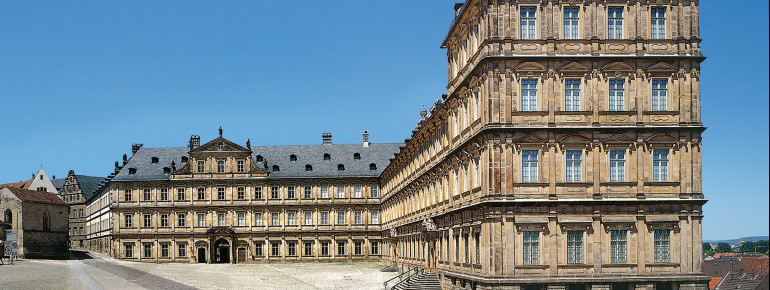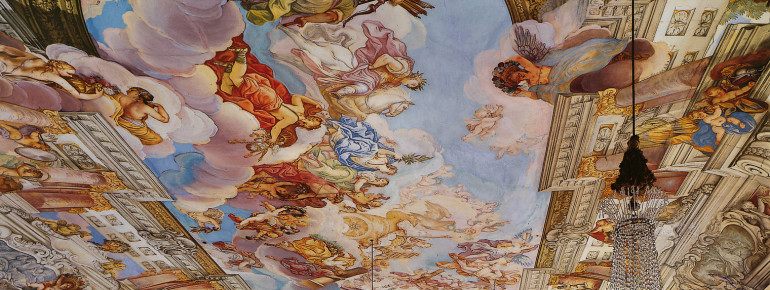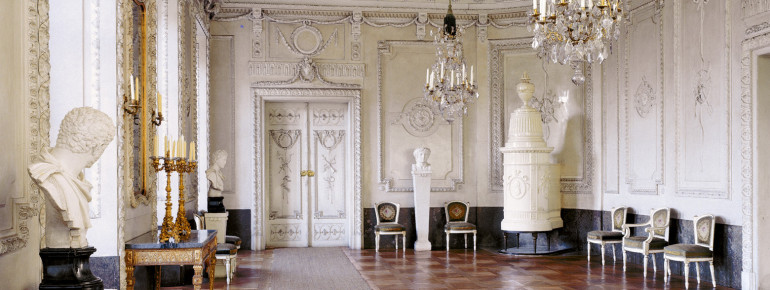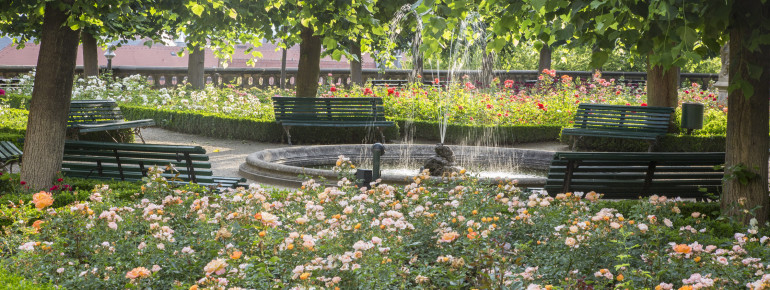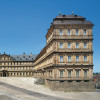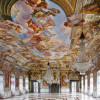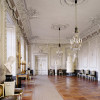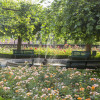Contents
Description
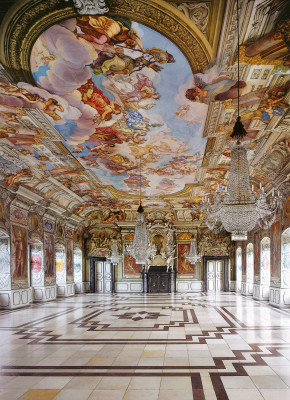
Visitors to the New Residence can marvel at more than 40 state rooms in Bamberg. These include the Prince Bishop's Apartment, the Emperor's Hall and the Emperor's Apartment. These rooms have been renovated since 2020, as well as the Electoral Apartment, the Baroque Gallery and the Old German Gallery. Stucco ceilings, knitted carpets, and furniture from the 17th and 18th centuries decorate the historic building. Together with Bamberg's cathedral, the New Residence Bamberg makes up the core of the UNESCO cultural heritage site of Bamberg's Old Town.
Prince Bishop's Apartment
From 1703 onwards, the Prince-Bishop's Apartment was used by Prince-Bishop Lothar Franz von Schönborn as his residence, but also by the later Bamberg Prince-Bishops. As a result, interior design and decoration developed into a contrasting mixture of styles.
Imperial Hall and Imperial Apartment
The Emperor's Hall stands out with its illusionistic extension through an impressive ceiling painting. It stands out as the most significant spatial work of art in the New Residence. The Imperial Apartment was originally designed by Elector Lothar Franz von Schönborn and served as a guest flat for influential officials. The Wittelsbach dynasty eventually used the Emperor's Apartment room group as a dwelling. The Emperor's Apartment is shown in 1900.
Electoral Apartment
The Electoral Apartment is located in the old Gebsattel building. It was initially used as the temporary residence of Prince-Bishop Lothar Franz von Schönborn until the Residence extension was completed. Later, the flat also served as a temporary home for Princess Elisabeth Christine of Brunswick-Wolfenbüttel and was part of Duke Wilhelm's court in Bavaria.
Baroque Gallery and the Old German Gallery
The Old German Gallery and the Baroque Gallery contain significant works from the Bavarian State Painting Collections. A highlight of the gallery is the work Sintflut (Flood) by Hans Baldung from 1516, which depicts people struggling against the flood in a dramatic and contrasting manner.
Furthermore, the Bamberg State Library has been located in the east wing of the New Residence since 1965. The New Residence also includes the Rose Garden, where 4500 roses bloom every year. From the garden, visitors can see Bamberg's city centre.
Historical Information
The New Residence began in 1603 under Prince-Bishop Johann Phillip von Gebsattel. His successor Johann Gottfried von Aschhausen continued the expansion before being halted by the Thirty Years' War. However, from 1695 onwards, the Mainz Archbishop Lothar Franz's expansion plans were revived. During this time, the building was characterised by the two wings that are still characteristic today. After the prince-bishops and the Bavarian Wittelsbach dynasty, the parliament and government found a quiet refuge in the New Residence due to revolutionary unrest in Munich. After the government moved out in the same year, the New Residence became a museum.
How to get there
The most convenient way to reach New Residence is by public transport. It's about a 20-minute walk from Bamberg's main railway station. Buses also take you there. The bus stop is at "Domplatz".
There are no parking spaces directly in front of the New Residence. However, Bamberg has a comprehensive parking guidance system.

